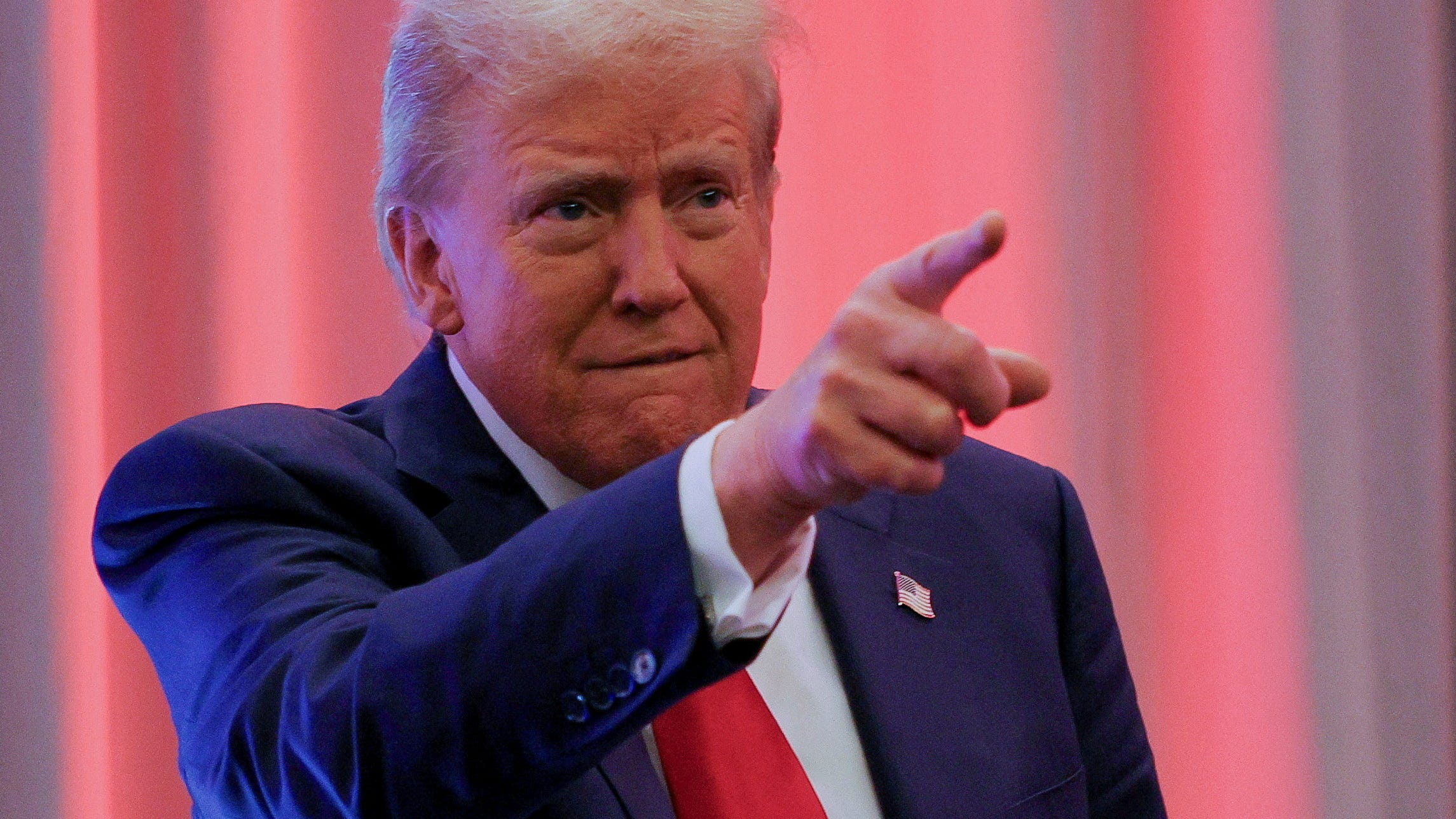Trump's Tariffs: A Source Of Confusion For Automakers

Table of Contents
Increased Costs and Reduced Competitiveness
Trump's tariffs significantly increased the cost of manufacturing vehicles, reducing the competitiveness of US automakers on the global stage. This impact stemmed from two primary sources: increased raw material costs and higher prices for imported parts.
Impact on Raw Materials
Tariffs on steel and aluminum, essential components in vehicle manufacturing, had a profound effect on automakers' bottom lines.
- Higher input costs led to reduced profit margins. The increased cost of raw materials directly translated to lower profits, forcing automakers to either absorb the costs or pass them onto consumers.
- Some manufacturers relocated production to avoid tariffs. To mitigate the impact of higher input costs, several automakers shifted some or all of their production to countries outside the US, where raw materials were less expensive. This led to job losses in the US and a decline in domestic manufacturing.
- Increased prices for consumers. The higher production costs were inevitably passed on to consumers in the form of higher vehicle prices, reducing affordability and potentially impacting sales volumes. This impact was felt across the board, from compact cars to luxury vehicles.
Impact on Imported Parts
The imposition of tariffs on imported parts further exacerbated the cost pressures faced by automakers.
- Disrupted established supply chains. Many automakers rely on globally integrated supply chains, sourcing parts from various countries to optimize costs and efficiency. Tariffs disrupted these established relationships, creating bottlenecks and delays.
- Forced automakers to source parts domestically, often at higher costs. To circumvent tariffs, some automakers attempted to source parts domestically. However, this often proved more expensive due to higher labor costs and a less developed domestic supply base.
- Delayed vehicle production and deliveries. Supply chain disruptions, coupled with the challenges of finding alternative suppliers, led to delays in vehicle production and deliveries, affecting both manufacturers and consumers.
Shifting Global Trade Dynamics
Trump's tariffs didn't exist in a vacuum. They triggered retaliatory measures from other countries, significantly altering global trade dynamics and impacting US automakers.
Retaliatory Tariffs
The imposition of tariffs by the US prompted retaliatory tariffs from trading partners, impacting the export capabilities of US automakers.
- Reduced export volumes to key markets. Retaliatory tariffs made US-made vehicles more expensive in foreign markets, leading to a decline in export volumes to key regions like the EU and China.
- Loss of market share to competitors. The increased cost of US-made vehicles allowed foreign competitors to gain market share, particularly in export markets.
- Increased uncertainty in international trade. The unpredictable nature of the trade disputes created considerable uncertainty for automakers, making long-term strategic planning incredibly difficult.
Restructuring of Supply Chains
In response to the tariffs and resulting trade disruptions, automakers were forced to fundamentally reassess and restructure their global supply chains.
- Increased investment in domestic production. Some automakers increased investment in domestic manufacturing to reduce their reliance on imported parts and mitigate the impact of tariffs.
- Diversification of sourcing to avoid tariff-affected regions. To avoid future trade disruptions, many automakers diversified their sourcing strategies, sourcing parts from a wider range of countries to reduce dependence on any single region.
- Long-term strategic implications for global manufacturing. The experience of Trump's tariffs had long-lasting implications for the global automotive industry, pushing manufacturers to rethink their manufacturing strategies and increase their resilience to future trade disputes.
Uncertainty and Investment Decisions
The fluctuating and unpredictable nature of Trump's tariff policies created a climate of uncertainty, significantly impacting automakers' investment decisions.
Difficulty in Long-Term Planning
The constant threat of new tariffs or changes to existing ones made long-term planning extremely challenging.
- Hesitation in making major investment decisions. The uncertainty surrounding trade policy led to hesitation in making significant capital investments in new facilities, equipment, or research and development.
- Uncertainty about future costs and market conditions. The volatile nature of the trade environment made it difficult to accurately predict future costs and market conditions, making long-term financial planning problematic.
- Impact on research and development initiatives. Uncertainty about future profitability and market access may have led to cuts in research and development, hindering innovation in the sector.
Lobbying Efforts and Political Pressure
The automotive industry engaged in substantial lobbying efforts to influence tariff policy, reflecting its vulnerability to these trade measures.
- Increased political pressure on the administration. Automakers and industry groups applied significant pressure on the Trump administration to modify or reverse its tariff policies.
- Negotiations and compromises with the government. Automakers engaged in intense negotiations and compromises with the government to secure exemptions or reductions in tariffs.
- Attempts to secure exemptions or tariff reductions. The industry actively lobbied for exemptions or reductions in tariffs on specific parts or vehicles, highlighting the significant impact of tariffs on their operations.
Conclusion
Trump's tariffs presented a significant challenge to the automotive industry, increasing costs, disrupting supply chains, and creating profound uncertainty. The impact extended beyond manufacturers, affecting consumers through higher prices and reduced choice. The experience highlighted the complex interplay between trade policy and the global automotive sector. Understanding the ramifications of Trump's tariffs is crucial for anyone involved in or affected by the automotive industry. By analyzing the impact of these trade policies, we can better prepare for similar future challenges and navigate the complexities of international trade in the automotive sector. To learn more about the lasting effects of Trump's Tariffs on the auto industry, continue your research using reliable sources and industry reports.

Featured Posts
-
 Riot Fest Announces 2025 Lineup Featuring Green Day And Weezer
May 02, 2025
Riot Fest Announces 2025 Lineup Featuring Green Day And Weezer
May 02, 2025 -
 Bbc Two Hd Newsround Viewing Information
May 02, 2025
Bbc Two Hd Newsround Viewing Information
May 02, 2025 -
 Manchester United Pays Tribute To Poppy Atkinson 10 Killed In Kendal Tragedy
May 02, 2025
Manchester United Pays Tribute To Poppy Atkinson 10 Killed In Kendal Tragedy
May 02, 2025 -
 Hl Stkwn Hdhh Mwasfat Blay Styshn 6
May 02, 2025
Hl Stkwn Hdhh Mwasfat Blay Styshn 6
May 02, 2025 -
 From Northumberland To The Globe A Handmade Boats Circumnavigation
May 02, 2025
From Northumberland To The Globe A Handmade Boats Circumnavigation
May 02, 2025
Latest Posts
-
 Municipales Dijon 2026 Un Programme Ecologique Pour La Ville
May 10, 2025
Municipales Dijon 2026 Un Programme Ecologique Pour La Ville
May 10, 2025 -
 Dijon Psg Le Club De La Capitale S Impose En Arkema Premiere Ligue
May 10, 2025
Dijon Psg Le Club De La Capitale S Impose En Arkema Premiere Ligue
May 10, 2025 -
 Arkema Premiere Ligue Victoire Difficile Du Psg Contre Dijon
May 10, 2025
Arkema Premiere Ligue Victoire Difficile Du Psg Contre Dijon
May 10, 2025 -
 Psg Met Fin A La Serie De Dijon En Arkema Premiere Ligue
May 10, 2025
Psg Met Fin A La Serie De Dijon En Arkema Premiere Ligue
May 10, 2025 -
 Arkema Premiere Ligue Le Psg Terrasse Dijon Apres Une Rencontre Haletante
May 10, 2025
Arkema Premiere Ligue Le Psg Terrasse Dijon Apres Une Rencontre Haletante
May 10, 2025
